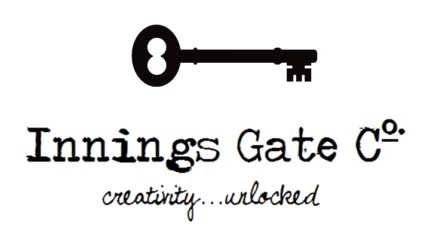
I’m not surprised that a lot of people find French wines intimidating. Having made it since the 6th Century B.C., they’ve had around 2,600 years of experience. Here in Ontario we can trace our viticulture all the way back… to the 1800s. And, although we do make some AMAZING wines now, timeline-wise it’s not much of a comparison. Reading about the history of wine in Bordeaux alone, it’s hard to even comprehend the saga that goes into every sip. For instance, did you know that Celtic warriors planted the original Bordeaux vineyards in the 1st Century A.D.? Or that when Eleanor, Duchess of Aquitaine, married Henry Plantagenet in 1152, the new relationship between Aquitaine and the British Isles allowed the export of Bordeaux wines to flourish? (To me, Henry Plantagenet exists solely on the pages of my Complete Works of Shakespeare anthology… but in Bordeaux he swishes and swirls in every wine glass.)
By the 18th Century, England accounted for only 10% of Bordeaux wine exports, due to increasing trade with the Caribbean. And in the 19th Century (whilst we in Ontario were just getting started), in the midst of two disasters: oidium (a powdery mildew) and phylloxera (an insect that fed on the roots and leaves of grapevines), Bordeaux entered a period of great prosperity. This was greatly due to the Industrial Revolution and subsequently, a free-trading spirit.
Through all these struggles, it’s no wonder Bordeaux and other French wine regions sought to protect themselves when, in the late 19th and early 20th Centuries, widespread fraud and a drop in prices created another crisis. This is when legislation relating to the geographic origin of wines came into being; quality control was later added to create the appellation d’origine contrôlée (AOC) system. Based on the concept of terroir, the AOC is the official French certification granted to geographical indications for wine, cheese, butter, and other products. Under French law, it is illegal to manufacture and sell a product that is labelled as being from one AOC region, without complying with the respective criteria.
Terrific Terroir
Bordeaux is the préfecture (or head city) of the département (somewhat like a province) of Gironde, which itself lies in the region of Aquitaine. People who live in Bordeaux are called Bordelais.
So, what makes wine from Bordeaux different from other French regions anyway? The interaction between the climate and the topography found in the Bordeaux region creates localised “mesoclimates” (the area surrounding the vineyard). The resulting quality of Bordeaux’s terroir produces what are commonly known as the Crus. This French term, which means “growth place,” is an indication of the quality of terroir and grape variety – but also of the wine producer’s talent.
The Blend Trend
The distinctive feature of Bordeaux wines is that they are made from a blend of several varieties. It is the complementary qualities of each varietal that give Bordeaux wines their unique finesse. When blending cabernet sauvignon and merlot, for instance, the cab sauv gives the merlot greater aging potential by strengthening its tannic structure, and the merlot tones down the cab sauv’s tannins. The varietals grown in Bordeaux include: merlot, cabernet sauvignon, cabernet franc, sémillon, sauvignon blanc, and muscadelle. These varietals combine to create six wine “families”: Bordeaux and Bordeaux Supérieur; Médoc and Graves; Saint-Emilion / Pomerol / Fronsac; Red Côtes; Dry white; and, Sweet white.
Bordeaux is clearly appropriately labelled as the world’s major wine industry capital. Its wine economy moves around €14.5 Billion per year. And because of its storied past, the jurisdiction of Saint-Emilion is part of the UNESCO World Heritage List.
Wine me and dine me…
French wines were made to be paired with food. Red Bordeaux are perfect with red meats such as beef, lamb or game, but also pair well with grilled turkey and pasta. Camembert and brie compliment red Bordeaux flavours nicely. Bordeaux sweet wines are amazing with les fromages bleus.
Here’s a quick article from Snooth.com on pairing food with Bordeaux wines.
From Bordeaux to Ontario
So, now that we know where it comes from, and what to serve it with – the question remains, can we find it here?
Yes! Canada is the 7th largest importer of Bordeaux wines, and as of 2009, Bordeaux represented 9% of all French wines sold in Ontario. The LCBO carries a wide selection of Bordeaux wines, ranging from a $10 Beaujolais to such rarities as a 1986 Château Margaux, priced at just over $2,000. They even sell an informational DVD called “Discover Wines of Bordeaux.”
But, the best way to experience Bordeaux wines, short of travelling to France, is to TRY THEM. And where better to do just that, than at a Bordeaux After Work Party? These parties are offered by the Bordeaux Wine Council in partnership with iYellow Wine Club. The next Party takes place on Tuesday July 19th at Marben Restaurant in Toronto. RSVP via the link above if you’d like to attend, or follow the conversation on Twitter with #bordeauxafterwork.
As anyone who’s been to an iYellow wine event can attest, they are definitely sans frontières… and who knows, you might just discover French wines aren’t that intimidating after all.

For more information on Bordeaux wines, visit www.bordeaux.com.

